Virtual Reality as a Tool for Public Consultations in Spatial Planning and Management
Abstract
:1. Introduction
- -
- improving cooperation between all city actors, building civil society, developing local communities, and increasing mutual trust in society and care for the common good;
- -
- increasing residents’ identification with a place and sense of responsibility for the surroundings and the local community, and increasing the development potential of an area through better planning of its development.
2. Literature Review
2.1. Social Participation
2.2. Communication in a Graphic Form
2.3. Virtual Reality
3. Study Methodology
3.1. Subject Matter of the Study
3.2. Research Procedure
4. Results
4.1. Area Development Plan
4.2. ArchitektVR Application
4.3. Proposed Improvements
5. Summary and Conclusions
Author Contributions
Funding
Conflicts of Interest
References
- Leipzig Charter on Sustainable European Cities; Leipzig, Germany, 2020; Available online: https://ec.europa.eu/regional_policy/archive/themes/urban/leipzig_charter.pdf (accessed on 8 September 2021).
- The New Charter of Athens 2003: The European Council of Town Planners’ Vision for Cities in the 21st Century; Alinea Editrice: Firenze, Italy, 2003.
- Lynch, K. The Image of the City; MIT Press: Cambridge, MA, USA, 1960; Volume 11. [Google Scholar]
- Gójska, A.; Kulczyński, P.; Lewenstein, B.; Pogoda, I.; Zielińska, E. Konsultacje Społeczne w Przestrzeni Wielkomiejskiej; Polskie Towarzystwo Socjologiczne: Warszawa, Poland, 2011. [Google Scholar]
- Madanipour, A. Whose Public Space? International Case Studies in Urban Design and Development; Routledge: London, UK, 2013. [Google Scholar]
- Cisek-Lachowicz, M.; Kichewko, K. Dialog obywatelski w praktyce. Studia Z Polityki Publicznej 2018, 2, 59–72. [Google Scholar] [CrossRef] [Green Version]
- Olejniczak, P. Partycypacja społeczna jako podstawa społeczeństwa obywatelskiego. Pr. Nauk. Wałbrzyskiej Wyższej Szkoły Zarządzania I Przedsiębiorczości 2015, 31, 111–121. [Google Scholar]
- Olech, A.; Kaźmierczak, T. Modele partycypacji publicznej. In Partycypacja Publiczna–o Uczestnictwie Obywateli w Zyciu Lokalnej Wspólnoty; Olech, A., Ed.; Fundacja Instytut Spraw Publicznych: Warszawa, Poland, 2011; pp. 100–111. [Google Scholar]
- Lauriusz, N. Wprowadzenie do partycypacji społecznej w Polsce. In Partycypacja Społeczna w Polsce. Atlas Dobrych Praktyk; Ćwiklicki, M., Frączek, M., Eds.; Fundacja Gospodarki i Administracji Publicznej: Kraków, Poland, 2013; pp. 26–38. [Google Scholar]
- Krajowa Polityka Miejska 2023; [The National Urban Policy 2023]; The Official Journal of the Republic of Poland “Monitor Polski” item 1235 from December 9; Warszawa, Poland, 2015. Available online: http://www.pte.pl/pliki/2/21/KrajowaPolitykaMiejska.pdf (accessed on 8 September 2021).
- Downes, M.; Lange, E. What you see is not always what you get: A qualitative, comparative analysis of ex ante visualizations with ex post photography of landscape and architectural projects. Landsc. Urban Plan. 2015, 142, 136–146. [Google Scholar] [CrossRef] [Green Version]
- Krek, A. Rational ignorance of the citizens in public participatory planning. In Proceedings of the 10th Symposium on Information-and Communication Technologies (ICT) in Urban Planning and Spatial Development and Impacts of ICT on Physical Space, CORP, Vienna, Austria, 22–25 February 2005; Volume 5, p. 420. [Google Scholar]
- Danahy, J.W. Technology for dynamic viewing and peripheral vision in landscape visualization. Landsc. Urban Plan. 2001, 54, 127–138. [Google Scholar] [CrossRef]
- Lange, E. The limits of realism: Perceptions of virtual landscapes. Landsc. Urban Plan. 2001, 54, 163–182. [Google Scholar] [CrossRef]
- Hanzl, M. Information technology as a tool for public participation in urban planning: A review of experiments and potentials. Des. Stud. 2007, 28, 289–307. [Google Scholar] [CrossRef]
- Evans-Cowley, J.; Hollander, J. The new generation of public participation: Internet-based participation tools. Plan. Pract. Res. 2010, 25, 397–408. [Google Scholar] [CrossRef]
- Brown, G. Public participation GIS (PPGIS) for regional and environmental planning: Reflections on a decade of empirical research. J. Urban Reg. Inf. Syst. Assoc. 2012, 25, 7–18. [Google Scholar]
- Bugs, G.; Granell, C.; Fonts, O.; Huerta, J.; Painho, M. An assessment of Public Participation GIS and Web 2.0 technologies in urban planning practice in Canela, Brazil. Cities 2010, 27, 172–181. [Google Scholar] [CrossRef]
- Simao, A.; Densham, P.J.; Haklay, M.M. Web-based GIS for collaborative planning and public participation: An application to the strategic planning of wind farm sites. J. Environ. Manag. 2009, 90, 2027–2040. [Google Scholar] [CrossRef]
- Ceccato, V.A.; Snickars, F. Adapting GIS technology to the needs of local planning. Environ. Plan. B Plan. Des. 2000, 27, 923–937. [Google Scholar] [CrossRef] [Green Version]
- Sieber, R. Public participation geographic information systems: A literature review and framework. Ann. Assoc. Am. Geogr. 2006, 96, 491–507. [Google Scholar] [CrossRef]
- Aguilar, R.; Flacke, J.; Pfeffer, K. Towards supporting collaborative spatial planning: Conceptualization of a map table tool through user stories. ISPRS Int. J. Geo. Inf. 2020, 9, 29. [Google Scholar] [CrossRef] [Green Version]
- Ampatzidou, C.; Constantinescu, T.; Berger, M.; Jauschneg, M.; Gugerell, K.; Devisch, O. All work and no play? Facilitating serious games and gamified applications in participatory urban planning and governance. Urban Plan. 2018, 3, 34–46. [Google Scholar] [CrossRef]
- Poplin, A. Playful public participation in urban planning: A case study for online serious games. Comput. Environ. Urban Syst. 2012, 36, 195–206. [Google Scholar] [CrossRef]
- Campagna, M.; Floris, R.; Massa, P.; Girsheva, A.; Ivanov, K. The Role of Social Media Geographic Information (SMGI) in Spatial Planning. In Planning Support Systems and Smart Cities; Lecture Notes in Geoinformation and Cartography; Geertman, S., Ferreira, J., Jr., Goodspeed, R., Stillwell, J., Eds.; Springer: Cham, Switzerlands, 2015. [Google Scholar] [CrossRef] [Green Version]
- Al-Kodmany, K. Using visualization techniques for enhancing public participation in planning and design: Process, implementation, and evaluation. Landsc. Urban Plan. 1999, 45, 37–45. [Google Scholar] [CrossRef]
- Rzeszewski, M.; Kotus, J. Usability and usefulness of internet mapping platforms in participatory spatial planning. Appl. Geogr. 2019, 103, 56–69. [Google Scholar] [CrossRef]
- Natarajan, L. Socio-spatial learning: A case study of community knowledge in participatory spatial planning. Prog. Plan. 2017, 111, 1–23. [Google Scholar] [CrossRef] [Green Version]
- Rinner, C.; Bird, M. Evaluating community engagement through argumentation maps—A public participation GIS case study. Environ. Plan. B Plan. Des. 2009, 36, 588–601. [Google Scholar] [CrossRef]
- Stauskis, G. Development of methods and practices of virtual reality as a tool for participatory urban planning: A case study of Vilnius City as an example for improving environmental, social and energy sustainability. Energy Sustain. Soc. 2014, 4, 1–13. [Google Scholar] [CrossRef] [Green Version]
- Van den Brink, A.; Van Lammeren, R.; Van de Velde, R.; Silke, D.Ã. Imaging the Future: Geo-Visualisation for Participatory Spatial Planning in Europe; Wageningen Academic Publishers: Wageningen, The Netherlands, 2017; Volume 3. [Google Scholar]
- Bishop, I.D. Visualization for participation: The advantages of real-time? In Trends in Real-Time Landscape Visualization and Participation; Buhmann, E., Paar, P., Bishop, I.D., Lange, E., Eds.; Wichmann: Dessau, Germany, 2005; pp. 1–15. [Google Scholar]
- Lange, E.; Hehl-Lange, S.; Mambretti, I. Assessment of Urban Green Space Qualities Using 3D Visualization Tools. In The Real and Virtual Worlds of Spatial Planning; Koll-Schretzenmayr, M., Keiner, M., Nussbaumer, G., Eds.; Springer: Berlin, Heidelberg, 2004. [Google Scholar] [CrossRef]
- King, S.; Conley, M.; Latimer, B.; Ferrari, D. Co-Design: A Process of Design Participation; Van Nostrand Reinhold: New York, NY, USA, 1989. [Google Scholar]
- Pettit, C.J.; Raymond, C.M.; Bryan, B.A.; Lewis, H. Identifying strengths and weaknesses of landscape visualisation for effective communication of future alternatives. Landsc. Urban Plan. 2011, 100, 231–241. [Google Scholar] [CrossRef]
- Gnat, M.; Leszek, K.; Olszewski, R. The Use of Geoinformation Technology, Augmented Reality and Gamification in the Urban Modeling Process. In Computational Science and Its Applications–ICCSA 2016; Gervasi, O., Murgante, S., Misra, S., Rocha, A.M.A.C., Torre, C.M., Taniar, D., Apduhan, B.O., Stankova, E., Wang, S., Eds.; ICCSA 2016. Lecture Notes in Computer Science; Springer: Cham, Switzerland, 2016; Volume 9787. [Google Scholar] [CrossRef]
- Cicha, K. Komunikacja wizualna-humanistyczne oblicze informatyki? Studia Ekon. 2017, 317, 42–53. [Google Scholar]
- Aguilar, J.; Díaz, F.; Altamiranda, J.; Cordero, J.; Chavez, D.; Gutierrez, J. Metropolis: Emergence in a Serious Game to Enhance the Participation in Smart City Urban Planning. J. Knowl. Econ. 2020, 1–24. [Google Scholar] [CrossRef]
- Pereira, G.C.; Rocha, M.C.F.; Poplin, A. e-Participation: Social Media and the Public Space. In Computational Science and Its Applications–ICCSA 2012; Murgante, B., Gervasi, O., Misra, S., Nedjah, N., Rocha, A.M.A.C., Taniar, D., Apduhan, B.O., Eds.; Lecture Notes in Computer Science; Springer: Berlin/Heidelberg, Germany, 2012; Volume 7333. [Google Scholar] [CrossRef]
- Müller, M.G. What is visual communication? Past and future of an emerging field of communication research. Stud. Commun. Sci. 2007, 7, 7–34. [Google Scholar]
- Rodríguez Estrada, F.C.; Davis, L.S. Improving visual communication of science through the incorporation of graphic design theories and practices into science communication. Sci. Commun. 2015, 37, 140–148. [Google Scholar] [CrossRef]
- Zimnicka, A. Komunikacja graficzna w strategiach rozwoju województwa. Przestrz. I Forma 2011, 16, 165–176. [Google Scholar]
- Jiang, B.; Qing, H. Research on the Innovation of Multimedia Technology and Visual Communication Technology. J. Phys. Conf. Ser. 2020, 1693. [Google Scholar] [CrossRef]
- Kukkonen, K. The map, the mirror and the simulacrum: Visual communication and the question of power. In Images in Use: Towards the Critical Analysis of Visual Communication; Stocchetti, M., Kukkonen, K., Eds.; John Benjamins Publishing: Amsterdam, The Netherlands, 2011; pp. 55–67. [Google Scholar]
- Jerald, J. The VR Book: Human-Centered Design for Virtual Reality; Morgan & Claypool: San Rafael, CA, USA, 2015. [Google Scholar]
- Racine, N. Visual Communication: Understanding Maps, Charts, Diagrams, and Schematics; Learning Express: New York, NY, USA, 2002. [Google Scholar]
- Portman, M.E.; Natapov, A.; Fisher-Gewirtzman, D. To go where no man has gone before: Virtual reality in architecture, landscape architecture and environmental planning. Comput. Environ. Urban Syst. 2015, 54, 376–384. [Google Scholar] [CrossRef]
- Wilson, P.N.; Foreman, N.; Tlauka, M. Transfer of spatial information from a virtual to a real environment. Hum. Factors 1997, 39, 526–531. [Google Scholar] [CrossRef]
- Péruch, P.; Belingard, L.; Thinus-Blanc, C. Transfer of spatial knowledge from virtual to real environments. In Spatial Cognition II: Integrating Abstract Theories, Empirical Studies, Formal Methods, and Practical Applications; Freksa, C., Brauer, W., Habel, C., Wender, K.F., Eds.; Springer: Berlin/Heidelberg, Germany, 2000; pp. 253–264. [Google Scholar]
- Krueger, M.W. Responsive environments. In Proceedings of the National Computer Conference, Dallas, TX, USA, 13–16 June 1977; pp. 423–433. [Google Scholar]
- Lanier, J. Virtual reality: The promise of the future. Interact. Learn. Int. 1992, 8, 275–279. [Google Scholar]
- Burdea, G.C.; Coiffet, P. Virtual Reality Technology; John Wiley & Sons: New York, NY, USA, 2003. [Google Scholar]
- Greengard, S. Virtual Reality; MIT Press: Cambridge, MA, USA, 2019. [Google Scholar]
- Harris, B.J. The History of the Future: Oculus, Facebook, and the Revolution that Swept Virtual Reality; HarperCollins Publisher: London, UK, 2019. [Google Scholar]
- Munafo, J.; Diedrick, M.; Stoffregen, T.A. The virtual reality head-mounted display Oculus Rift induces motion sickness and is sexist in its effects. Exp. Brain Res. 2017, 235, 889–901. [Google Scholar] [CrossRef] [PubMed]
- Jamei, E.; Mortimer, M.; Seyedmahmoudian, M.; Horan, B.; Stojcevski, A. Investigating the role of virtual reality in planning for sustainable smart cities. Sustainability 2017, 9, 2006. [Google Scholar] [CrossRef] [Green Version]
- Puyana-Romero, V.; Lopez-Segura, L.S.; Maffei, L.; Hernández-Molina, R.; Masullo, M. Interactive soundscapes: 360-video based immersive virtual reality in a tool for the participatory acoustic environment evaluation of urban areas. Acta Acust. United Acust. 2017, 103, 574–588. [Google Scholar] [CrossRef]
- Patterson, Z.; Darbani, J.M.; Rezaei, A.; Zacharias, J.; Yazdizadeh, A. Comparing text-only and virtual reality discrete choice experiments of neighbourhood choice. Landsc. Urban Plan. 2017, 157, 63–74. [Google Scholar] [CrossRef]
- Howard, T.L.; Gaborit, N. Using virtual environment technology to improve public participation in urban planning process. J. Urban. Plan. Dev. 2007, 133, 233–241. [Google Scholar] [CrossRef]
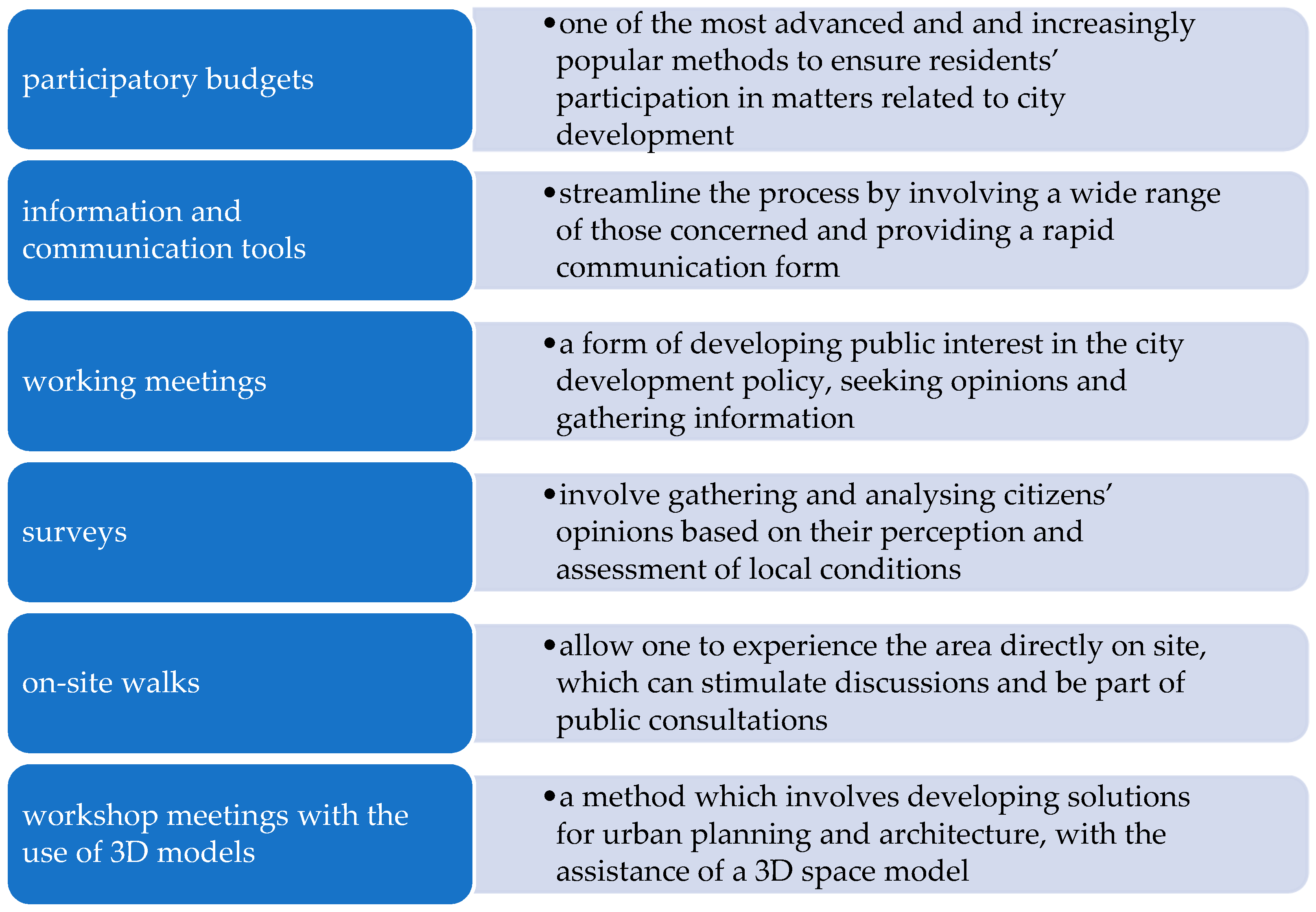



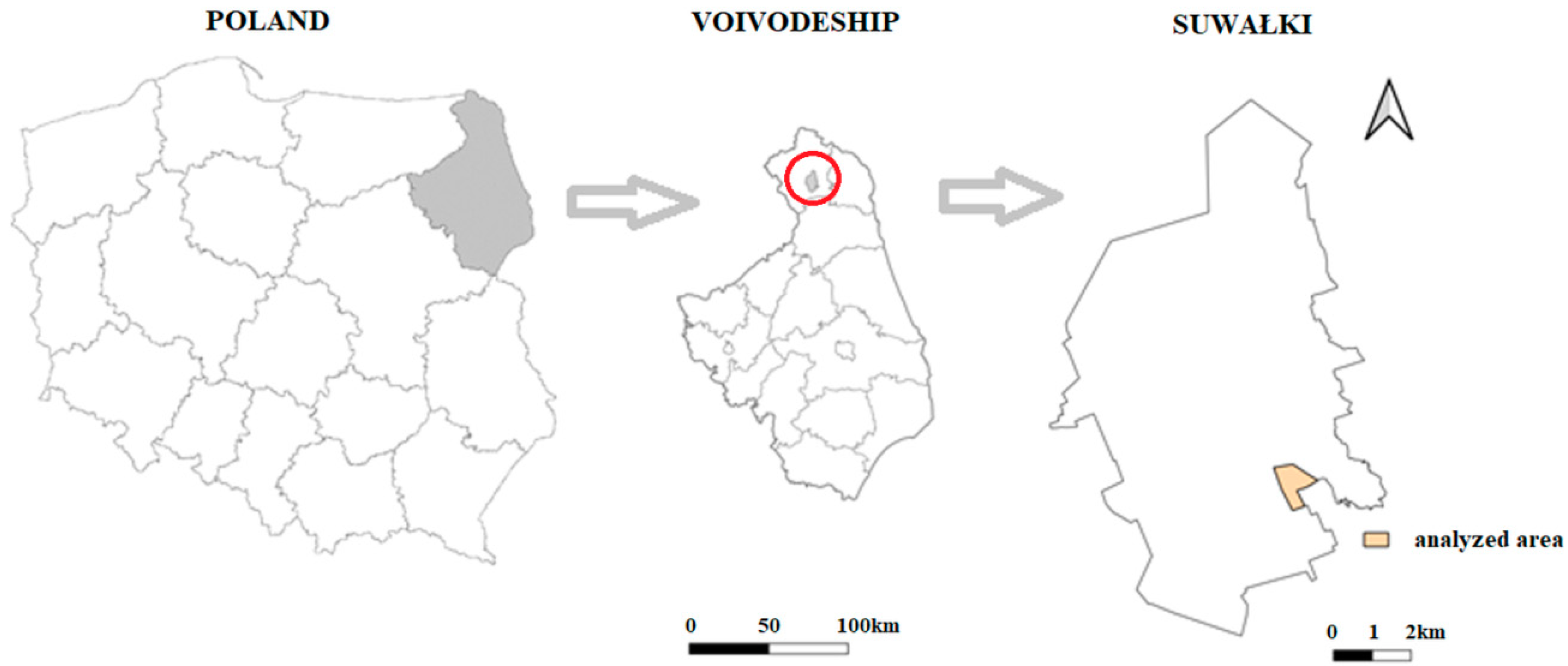



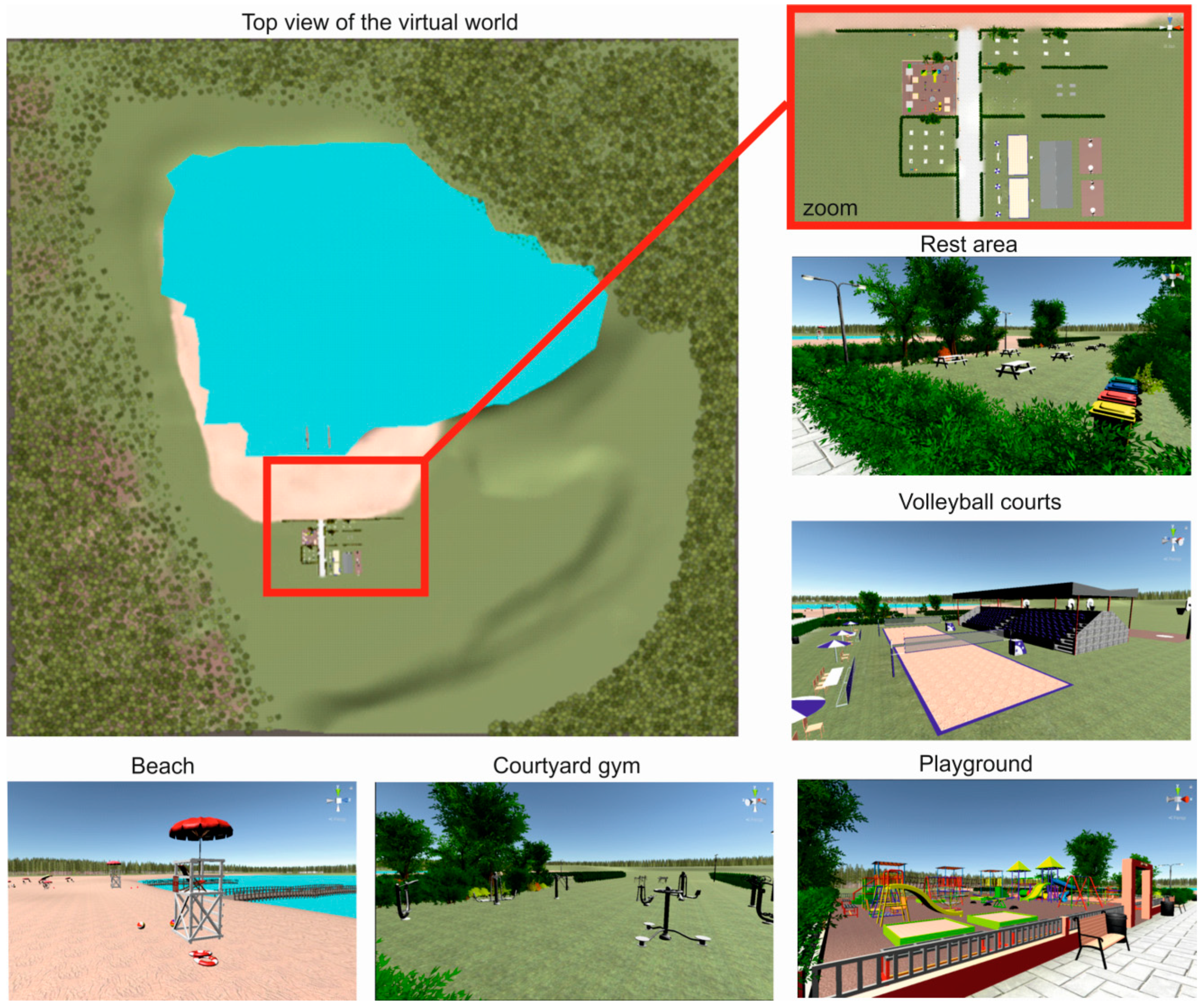
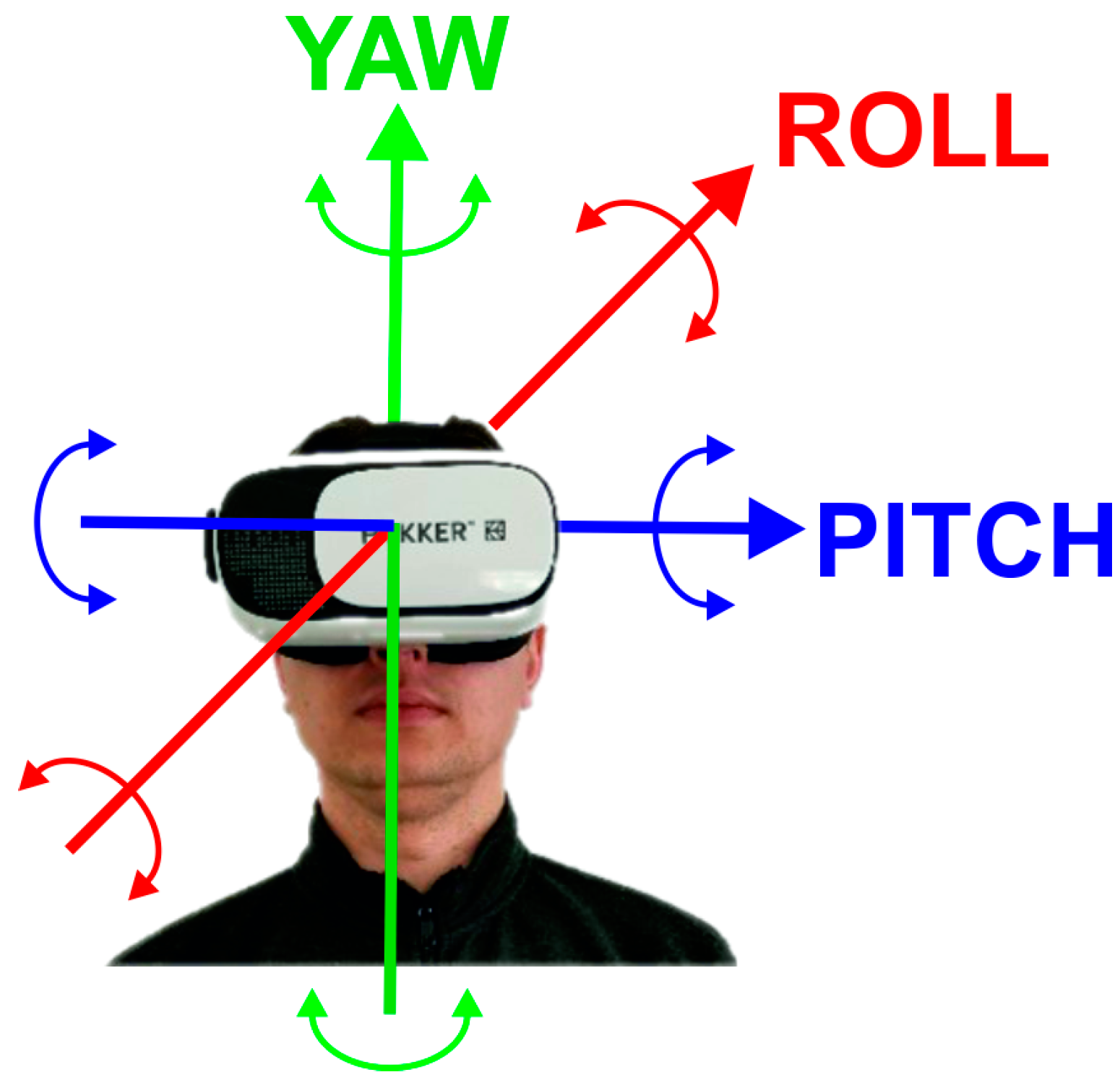

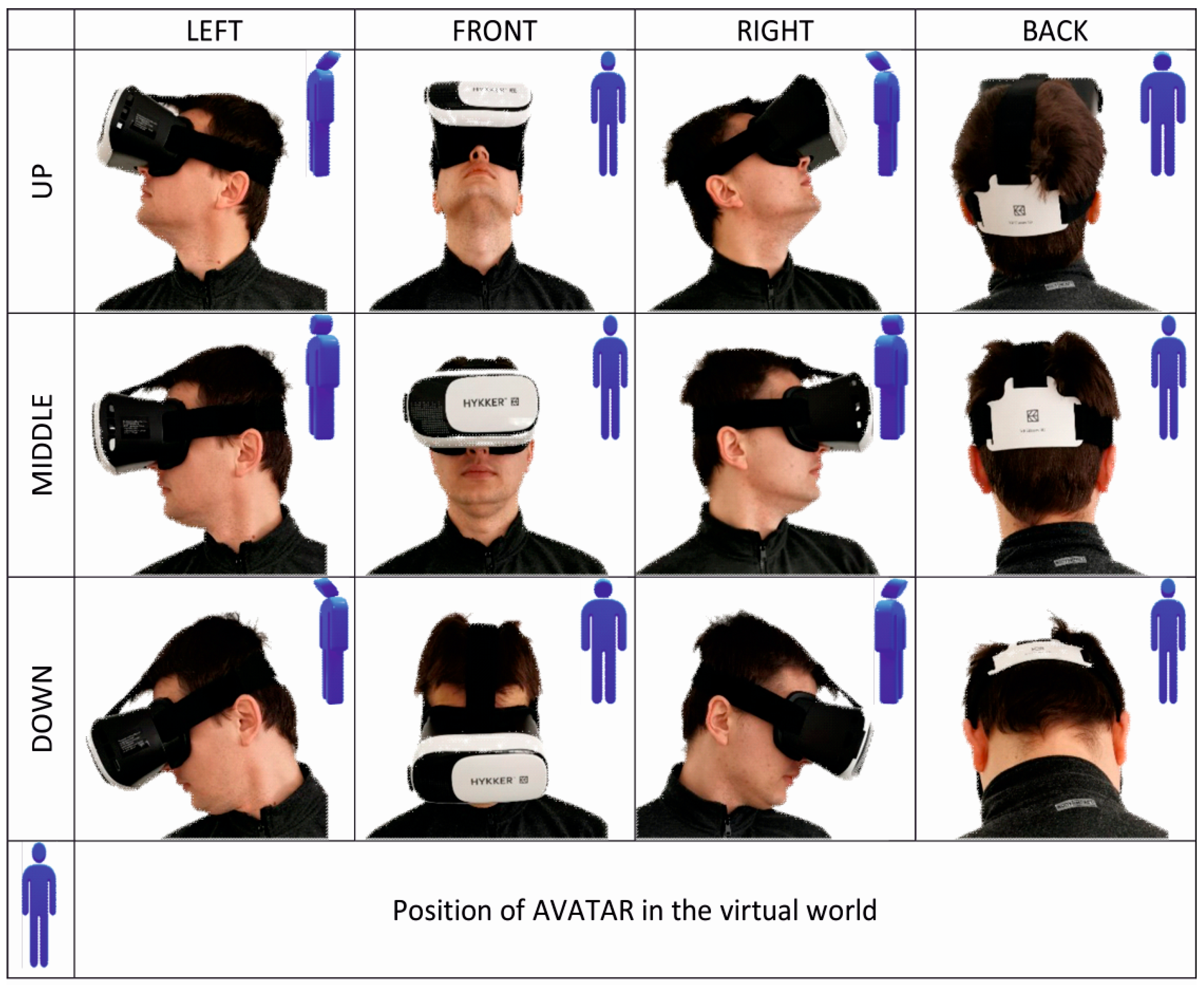
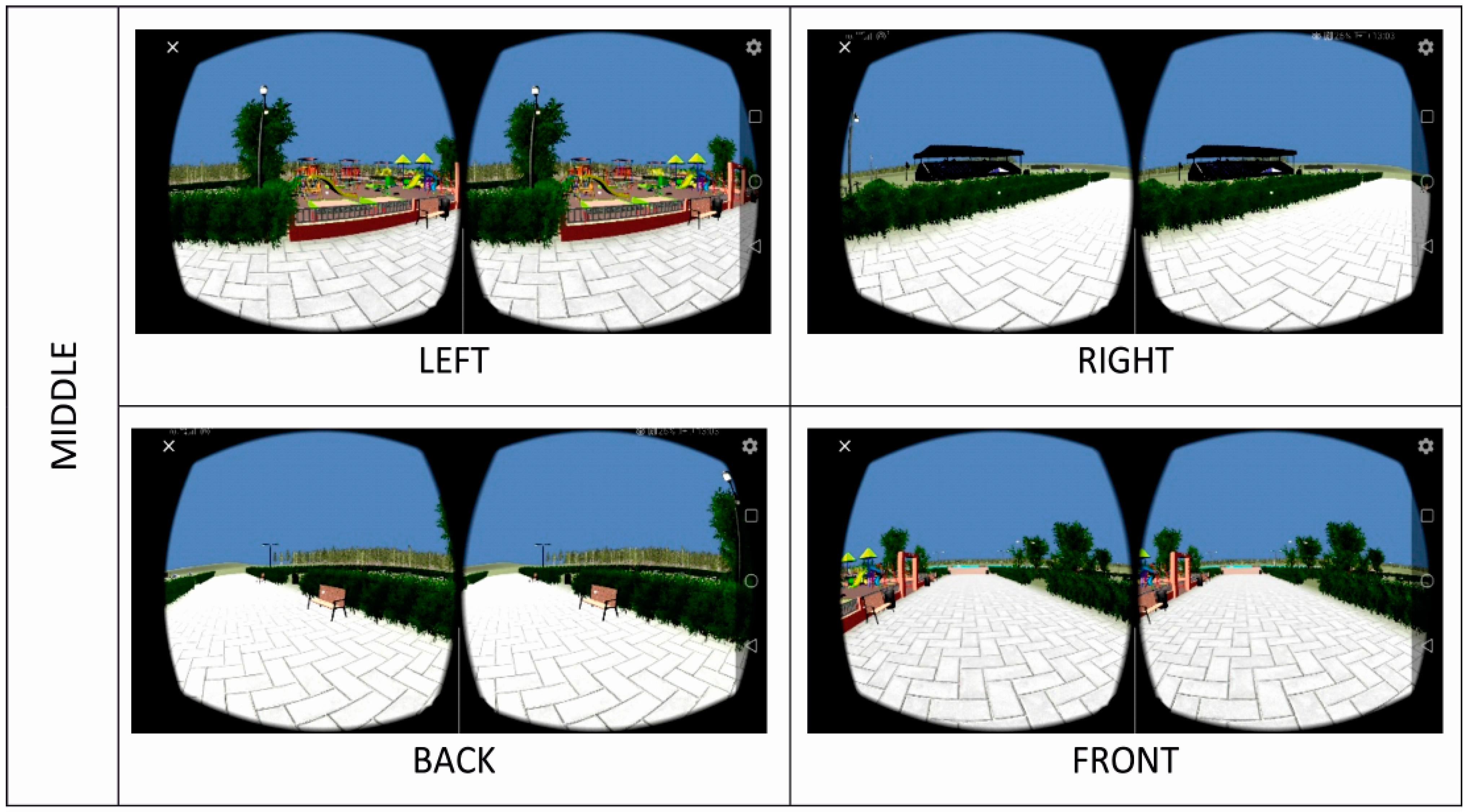
| Purpose of the Land (Function) | Forms and Elements of the Area Development |
|---|---|
| 3ZN—areas of uncontrolled greenery (approx. 16.2 ha) |
|
| 4US-ZP—sports and leisure facilities in controlled greenery (approx. 12.3 ha) |
|
| 5WS—the area of the post-excavation site surface water reservoir (approx. 32.5 ha) |
|
 | A local area development plan is a by-law act, which is passed as a resolution of the commune council. It contains detailed guidelines for land development. |
 | Geoportal Krajowy is a website which provides users with access to spatial data service provided by the National Infrastructure of Spatial Information. The portal is intended both for individuals and for legal persons. |
 GIS Software | QGIS software is a free of charge, open and multi-platform geoinformation application. Since 2007, it has been part of a project led by the Open Source Geospatial Foundation, whose aim is to promote and support cooperation regarding the expansion of geospatial data, as well as open GIS technologies. |
 | SketchUp is a professional program used to model 3D objects, i.e., buildings, street furniture, greenery or people. |
 | The Unity3D environment was first presented in 2005. This tool enables designing two- and three-dimensional games, animations or visualisations. For this reason, the tool is popular among professionals and hobbyists. |
 | C# is a multi-platform programming language designed and developed by Microsoft. |
Publisher’s Note: MDPI stays neutral with regard to jurisdictional claims in published maps and institutional affiliations. |
© 2021 by the authors. Licensee MDPI, Basel, Switzerland. This article is an open access article distributed under the terms and conditions of the Creative Commons Attribution (CC BY) license (https://creativecommons.org/licenses/by/4.0/).
Share and Cite
Szczepańska, A.; Kaźmierczak, R.; Myszkowska, M. Virtual Reality as a Tool for Public Consultations in Spatial Planning and Management. Energies 2021, 14, 6046. https://doi.org/10.3390/en14196046
Szczepańska A, Kaźmierczak R, Myszkowska M. Virtual Reality as a Tool for Public Consultations in Spatial Planning and Management. Energies. 2021; 14(19):6046. https://doi.org/10.3390/en14196046
Chicago/Turabian StyleSzczepańska, Agnieszka, Rafał Kaźmierczak, and Monika Myszkowska. 2021. "Virtual Reality as a Tool for Public Consultations in Spatial Planning and Management" Energies 14, no. 19: 6046. https://doi.org/10.3390/en14196046
APA StyleSzczepańska, A., Kaźmierczak, R., & Myszkowska, M. (2021). Virtual Reality as a Tool for Public Consultations in Spatial Planning and Management. Energies, 14(19), 6046. https://doi.org/10.3390/en14196046







